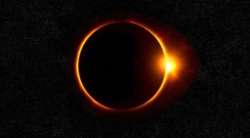Solar Eclipse 2020 on June 21; here's Surya Grahan timing, safest ways to watch
Solar Eclipse 2020: The annular eclipse, often called the 'ring of fire' is set to take place on June 21, 2020. Commonly termed as 'Surya Grahan', the Solar Eclipse 2020 is a phenomenon awaited by scores of skygazers and will be the first Surya Grahan of this year. The Solar Eclipse 2020 will be the second second annular eclipse post December 2019.

Solar Eclipse 2020: The annular eclipse, often called the 'ring of fire' is set to take place on June 21, 2020. Commonly termed as 'Surya Grahan', the Solar Eclipse 2020 is a phenomenon awaited by scores of skygazers and will be the first Surya Grahan of this year. The Solar Eclipse 2020 will be the second annular eclipse post December 2019.
What is Solar Eclipse?
A solar eclipse is witnessed when the moon passes between the Earth and the Sun. During the Surya Grahan phenomenon, the image of the Sun is totally or partly obscured. In case of an annual solar eclipse, the moon's apparent diameter is smaller than that of the Sun. The phenomenon also blocks most of the sunlight, causing the Sun to look like an annulus (ring). An annular eclipse appears as a partial eclipse over a region of the Earth thousands of kilometres wide.
Types of Solar Eclipses
The solar eclipses can be divided into three categories - total, partial and annular. A solar eclipse is witnessed when the moon passes between the Earth and the Sun. In a partial eclipse, the moon covers a part of the Sun and makes the leftover Sun visible. Lastly, during an annular solar eclipse, the Moon covers the Sun fully, but due to its relatively small size the out ring of the Sun is completely visible to the people.
Solar Eclipse 2020: Where will Surya Grahan be visible?
The Solar Eclipse 2020 will be visible through Central African Republic, Congo, Ethiopia, southern Pakistan, Northern India and China. A partial eclipse will be visible in north and east Africa, in south-east of Europe, most of Asia (except the north part of Russia) and in the north of Australia just before sunset. In Europe the partial eclipse will visible for places southeast of the line roughly passing through Perugia, Miskolc, Lviv and Yaroslavl.
Solar Eclipse 2020: Time
The Solar Eclipse 2020 will begin at 9:15 AM (IST) and will continue till 3:04 PM on June 21. The best of the solar eclipse will be visible at 12:10 PM.
Will Solar Eclipse 2020 be visible in India?
The Solar Eclipse 2020 will be witnessed in India. The Surya Grahan will begin at 10:12 AM near Gharsana in Rajasthan. The annular phase will begin around 11:49 am and end at 11:50 am, Director of the MP Birla Planetarium Debi Prasad Duari said. The "ring of fire" can best be seen, just for a minute, from Suratgarh and Anupgarh in Rajasthan, Sirsa, Ratia and Kurukshetra in Haryana, and Dehradun, Chamba, Chamoli and Joshimath in Uttarakhand.
According to NASA, the Moon will block 99.4 per cent of the Sun at its peak and will be visible very well from Northern India.
This year we will witness three more eclipses - the first two are lunar eclipse in July and November and the third one will be a solar eclipse in December.
How to watch Solar Eclipse 2020
According to experts, one should never directly look at the Sun at the time of a solar eclipse. Skygazers should watch the Sun through a box projector or use binoculars or telescope to watch the solar eclipse.
Are there any solar eclipses in 2020?
The year 2020 will witness two solar eclipses. The first one will be witnessed on June 21, while the next one will be witnessed on December 14.
How many eclipses will there be in 2020?
The year 2020 has 6 eclipses, 2 solar eclipses and 4 lunar eclipses.
